The NHL All-Star Game, held in late January or early February each season, is the symbolic halfway point of the hockey season. The All-Star Game is supposed to showcase the league’s best players of the season so far, shine a light on one NHL city and arena and be a treat for fans watching in person and at home.
But with near-snubs from the lineup, like the Pittsburgh Penguins’ Kris Letang, or all-together misses like the Penguins’ Jake Guentzel, the All-Star Game format needs a more accommodating change.
See you at the All Star game. Thanks to all the fans that voted for me 👏 https://t.co/loF4qlBh3e
— Kristopher Letang (@Letang_58) January 11, 2019
History of the NHL All-Star Game
In 1934, the Toronto Maple Leafs hosted a benefit game as a fundraiser for forward Ace Bailey, who suffered a career-ending injury in a vicious battle of mistaken identity with the Boston Bruins’ Eddie Shore.
Walter Gilhooley, sports editor of the Montreal Journal, proposed the game, which was held on Valentine’s Day. Prior to the match, Bailey’s No. 6 jersey was retired by the Maple Leafs, the first retired number in league history. The contest itself pitted the Maple Leafs against “all-stars” from the other five NHL clubs, with the home squad providing a 7-3 trouncing.
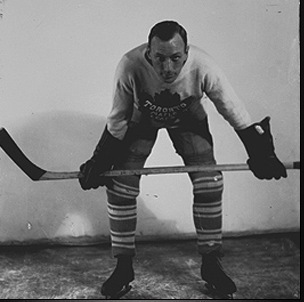
Though this benefit game is widely considered the first NHL All-Star Game, the first game bearing that official title wasn’t held until 1947, before the start of the regular season. The defending Stanley Cup champion Maple Leafs once again played a squad of the best players from the rest of the league. This time, the All-Star squad prevailed in a third-period come-from-behind 4-3 win.
Through the years, the format of the game has changed both slightly and significantly. In 1967, the year of the “next six” expansion, the league moved the All-Star Game to its current place at the midway point of the season, and by the end of the decade the teams changed as well, pitting the older Original Six East Division teams against the new expansions in the West Division.
In the late ’70’s, the All-Star Game was suspended for one year in favor of the Challenge Cup, a tournament-style series between the NHL All-Stars and the Soviet National Team at Madison Square Garden in New York City. The Soviets beat the NHL two games to one. This tourney saw a revival in the ‘80’s with Rendez-vous’87, another NHL versus Soviet matchup, where, this time, the NHL was victorious.
In 1990, the skills competition and the Heros of Hockey game, an alumni game played in the style of the All-Star contest, were unveiled to an eager crowd at Pittsburgh’s Civic Arena. These additions turned the event into the weekend-long spectacular that is still popular today.
In 2002, the league added another twist to the mix, replacing the Heroes of Hockey game with the NHL YoungStars Game. It featured head-to-head competition of young NHL players and leading prospects. In 2008. this event was incorporated into the skills competition but was discontinued the next year.
Related: The Next 5 Penguins Jerseys to Hang from the Rafters
Additional format changes have included All-Star drafts in the early 2010’s, where the team captains drafted their own lineups from the selected all-star pool, and the current three-on-three single-elimination tournament that consists of four all-star teams, one from each division, battling to split a $1 million cash prize.
Fan Voting In the NHL All-Star Game
Based on its history, it’s not out of the question to both propose and implement a change to the NHL All-Star Game. Though the game itself is a time-tested tradition, the specifics aren’t consistent. Coincidentally, the process of choosing league All-Stars seems to follow the same undefined path.
The blend of fan voting and league choice of players was first proposed in 1969, when fans voted on the starting lineups for the Wales and Campbell Conference All-Stars, goalies included, and the rest of the players were chosen by the NHL’s Hockey Operations Department and the teams’ general managers.
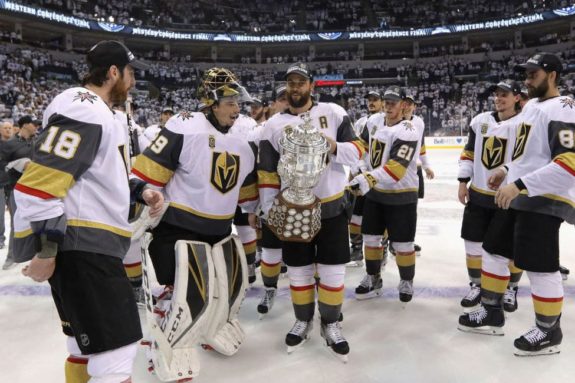
The idea of fan balloting didn’t really catch on until 1985. Throughout the ’70’s and early ’80’s, the All-Star Game was losing publicity and becoming a burden rather than an honor. Players were opting out of the game in favor of resting midway through the season, host cities were declining to bring the event to town and media coverage of the game was dwindling.
Fan balloting was instituted as a way to keep the public interested and to feel they had a stake in what goes on at the game, but how much of that power is real, and how much of it is an illusion put on by the league?
The Penguins have sent 35 players to the All-Star Game since 1968, and their players have been fan-voted into the lineup 31 times since 1985 with Mario Lemieux being voted in the most of any Penguins player at 10 times in his career, which included a fan vote to the Rendez-vous ‘87 game.
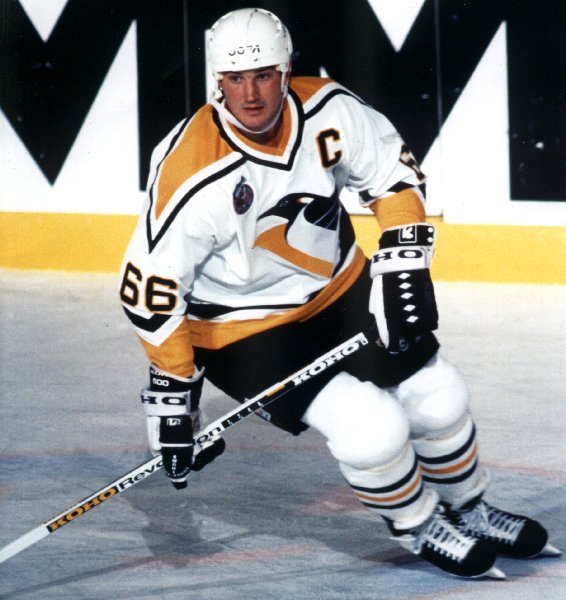
It’s not surprising that players like Lemieux, Sidney Crosby, Paul Coffey, Jaromir Jagr and Marc-Andre Fleury have been voted into the All-Star lineup over the years. Their names are some of the best known in hockey, and they have the trophies and Stanley Cup rings to back up their All-Star statuses and to fuel public interest.
Put simply, fan voting for players like these, the undisputed best in the game, is expected. In 2019, fans were able to vote for the captains of each divisional team and they chose whom any NHL executive or analyst would have predicted: Toronto’s Auston Matthews, the Washington Capitals’ Alex Ovechkin, the Colorado Avalanche’s Nathan MacKinnon and the Edmonton Oilers’ Connor McDavid.
Ovechkin aside, the other three captains are members of the next wave of great hockey stars. All are under the age of 24 and two of them (McDavid and MacKinnon) are captains or alternate captains on their respective clubs. With social media and 24-hour sports channels, these names are probably known by even non-hockey fans. These are the types of results that NHL executives expect when tallying fan ballots.
Instances like the John Scott case of 2016 are anomalies, but they also threaten the stability and predictability that the NHL has grown to expect from its fan-voting population.
Related: Great Scott! How Fan Voting Affects the All-Star Game
No Method to the NHL’s Madness
On the NHL’s Hockey Operations Department side of all-star selection, the choice of players is more akin to throwing a dart at a map and seeing where it lands. The map might be small, the size of the Pittsburgh city limits versus a map of North America or the world, but there doesn’t seem to be an exact formula as to how players beyond the scope of fan voting are picked.
Take a moment to search “How does the NHL Hockey Operations Department choose which players to send to the All-Star Game?” and you will get many articles detailing this year’s roster and the process of fan voting and league choice, but you will not get definitive criteria on how players are chosen.
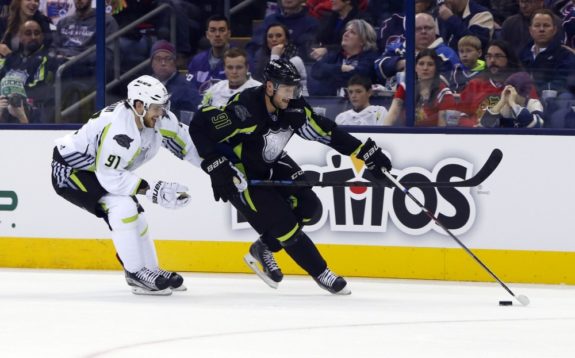
A logical way of picking a yearly batch of all-stars would be to review the statistics. More simply, take the top-five leaders in the trophy races – the Art Ross, Calder, Norris, Rocket Richard, Vezina and Jennings – and add them to the all-star lineup. Some of the top five players in these categories could overlap, leaving room for other players further down the lists in spots six, seven or eight to earn entry to the All-Star Game.
Though this seems like a fair and solid selection process, it is not used by the Hockey Operations Department. Nine of the current top-five leaders for these trophies were not invited to the All-Star Game, and two – the Penguins’ Letang and Jeff Skinner of the Buffalo Sabres – were fan-voted in through a new program instituted for 2019 called “Last Men In.”
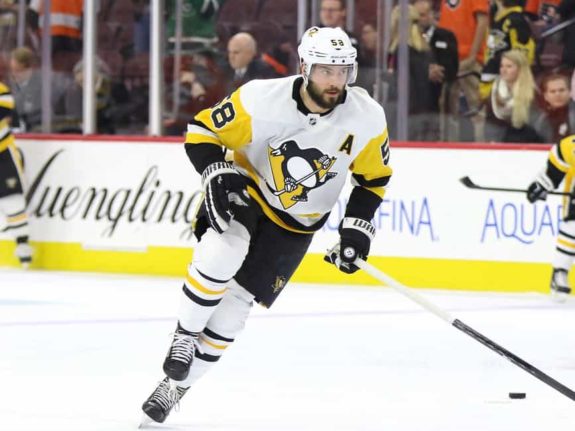
An argument could even be made that, in an effort to represent all 31 teams in the league, the Hockey Operations Department could choose the top point scorer on each club to represent his team at the All-Star Game, while using the Vezina or Jennings Trophy standings to choose goalies, and Norris Trophy standings to choose defensemen.
Though many of the NHL’s picks for the game are the top point-getters for their club, this is not a rule across the board, as the Columbus Blue Jackets’ Artemi Panarin has four more points than representative Cam Atkinson and the Ottawa Senators’ rep Thomas Chabot is third on his team, 10 points behind leader Mark Stone.
While the “Last Men In” voting was another tactic organized to make the fans feel involved in the process, it’s also a bit of a slap in the face to the eligible players, some of whom are their teams’ top scorers like the Detroit Red Wings’ Dylan Larkin. They weren’t good enough in the eyes of the Hockey Operations Department to attend the All-Star Game but could earn their way in if they have enough fans.
Prior to the announcement of the “Last Men In,” Letang told NHL.com’s Tom Gulitti:
“It’s always a good honor to get picked in the All-Star Game, I hope for the best, but at the same time, it is what it is. There are so many good players in this league.”
This is, of course, a professional response, and a sentiment probably shared by most of Letang’s 30 other “Last Men In” hopefuls, and the 27 that didn’t make the cut. However, for a player who’s having a dominant comeback year, and who is in fifth place for the Norris Trophy as of Jan. 14, he shouldn’t have to hope he has more fans than seven other Metropolitan Division players, all of whom were forwards.
Related: The NHL All-Star Game’s Jumbo Mistake
A New All-Star Format for Better Player Selection
Revamping the All-Star Weekend could allow for a better showcase of league stars and alleviate some of the wishy-washy practices of player selection. The following changes could make the playing field fairer and more exciting for spectators.
Keep The Skills Competition
With any changes being made to All-Star Weekend, one thing that shouldn’t be overhauled is the Skills Competition, which is, in truth, more entertaining than the All-Star Game itself. Where else are you going to get to see Ovechkin on a breakaway wearing a straw hat and giant sunglasses while Evgeni Malkin plays the role of ringside coach, dolling out Gatorade and cheers of encouragement?
Don’t. Touch. The. Skills. Competition.
Reinstate the YoungStars Game
When it comes to the All-Star Game, the young guys are part of the problem. In today’s format, they’re either beating out veteran players who deserve to attend, or they’re getting passed over with the false hope that in a few years they’ll have proven themselves worthy to attend. A dream that might not happen as other young guys continue to leapfrog more experienced players.
By reinstating the YoungStars Game, these problems are eliminated. It takes younger guys off the main All-Star Game rosters, freeing up space, while simultaneously allowing more young guns to participate in the festivities. Someone like the Penguins’ Guentzel, the team’s leading goal scorer and fourth-place point-getter, would be a prime candidate for a YoungStars Game.
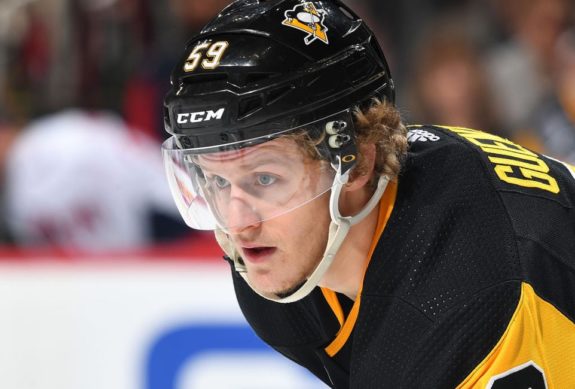
Rules would, of course, have to be put in place as to what qualifies a player to be an NHL YoungStar. Basic qualifications could include NHL regular season game totals that do not exceed 246 (three full seasons), and players must have either earned an opening-night roster spot or have played in half of his club’s games (a quarter of the season) leading up to the YoungStars roster selection date to qualify.
Return to 5-On-5
As a personal fan of the Eastern/Western Conference, five-on-five one-game event, the three-on-three style isn’t appealing. This is a minority opinion among fans and players alike.
Of the new style, Letang told Penguins’ Staff Writer Sam Kasan:
“[three-on-three] is way better. The five-on-five there isn’t enough room. Guys are just coasting. This you have to skate and there’s something to win. So guys are trying hard.”
Personally, the open-ice, tournament style with “something to win” is the reason why three-on-three isn’t exciting. It’s too much like a regular game. No one is trying trick shots, the goalies aren’t goofing around and the score, especially in the final game, is usually tight.
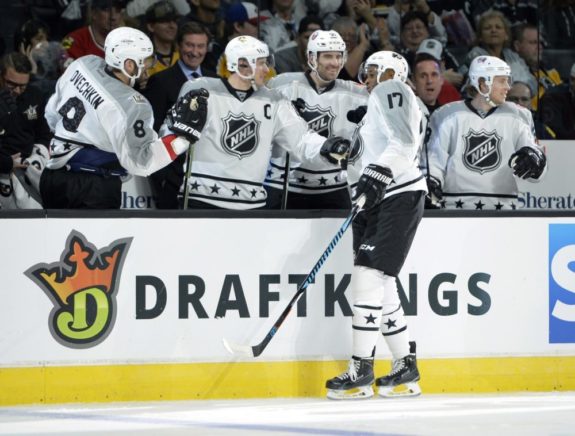
The new format also cuts a regular game roster from 20 players, including a backup goalie, to 10. With even just three lines, two defensive pairings and two goalies, each division could send five more players to the All-Star Game in the current tournament style format with a five-on-five lineup.
Some might argue upping the player count diminishes the exclusivity of the event, but with roughly 713 players in the league, not including rotating minor league call-ups, having 60 players instead of 40 does not diminish the honor or value of being elected to the squad.
Ditch the All-Star Game Altogether
In the end, if the NHL can’t come up with a way to objectively choose its all-stars while keeping the fans engaged and excited about the event, maybe they should ditch the concept completely. Not a midseason game, of course, but one that is supposed to showcase the best of the league.
Instead, the league could host the Fan Selection Spectacular. No holds barred fan voting for every position, including coaches. Eliminate the John Scott Rule and let the Rory Fitzpatricks and the Phil Kessels of the league have their time to shine. A Fan Selection Spectacular could possibly give players like Ovechkin and the Montreal Canadiens’ Carey Price the rest they crave without the one-game suspension penalty if the fans don’t vote them in.
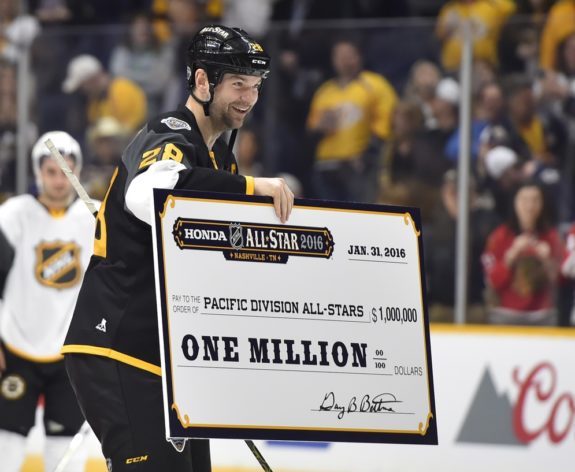
Just like any other tradition, there comes a time when change is necessary. Next year, 2020, sounds like a good time to try something new, whether it be switching up the All-Star Game format, or trying a fan-driven event. St. Louis is scheduled to host next season’s All-Star Game but if they’re not on board with the changes, Pittsburgh would gladly take on the challenge of hosting something new.